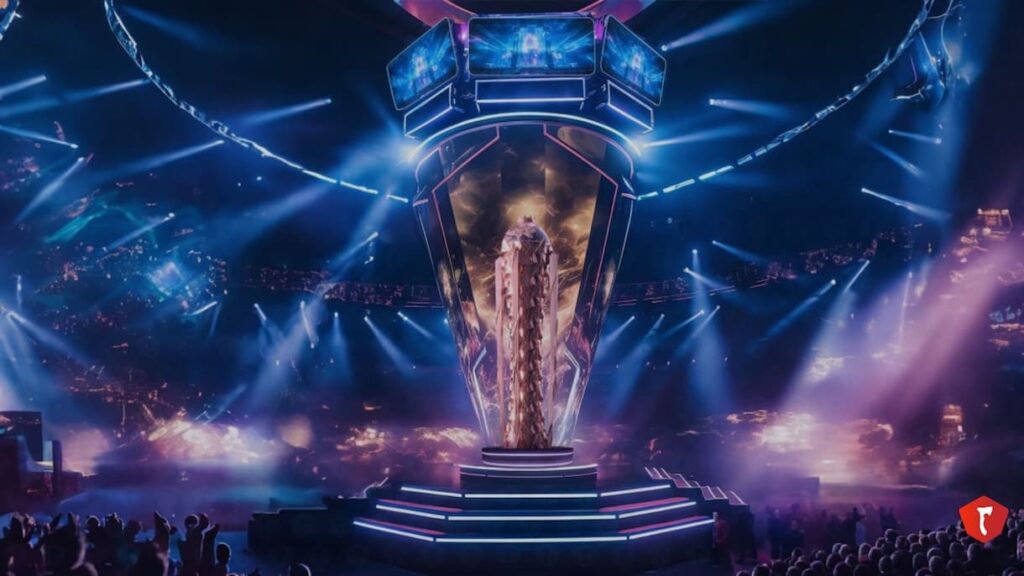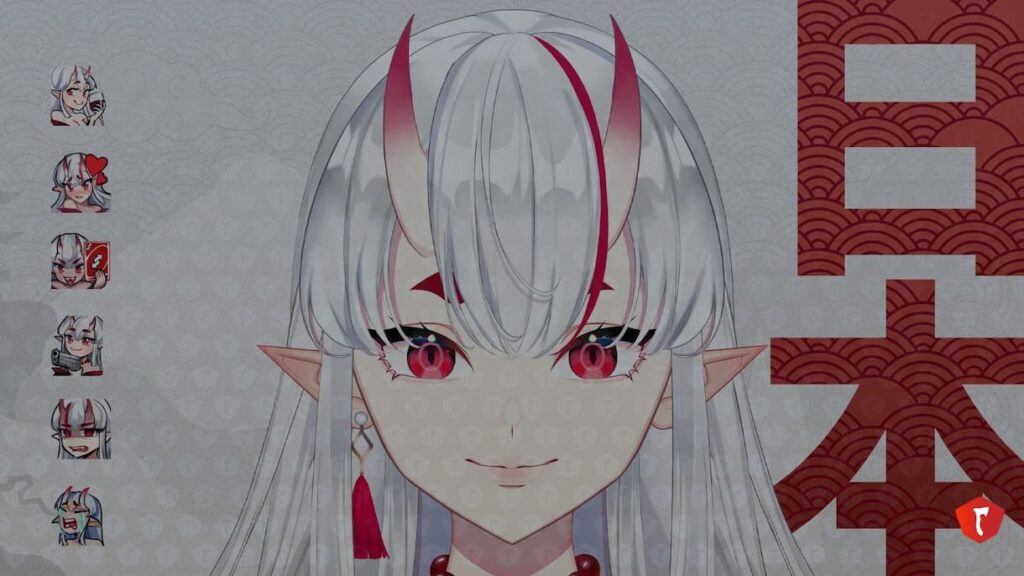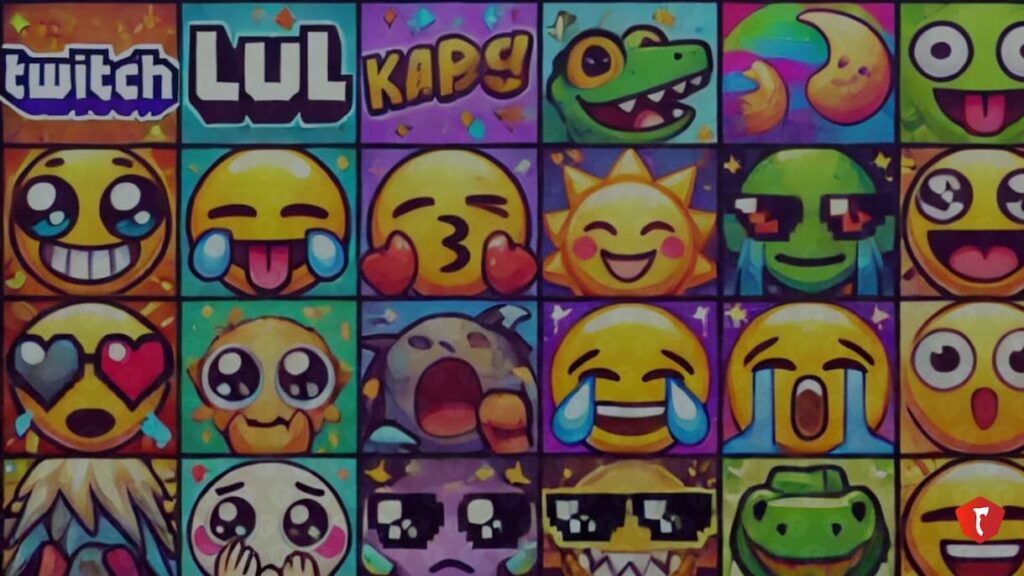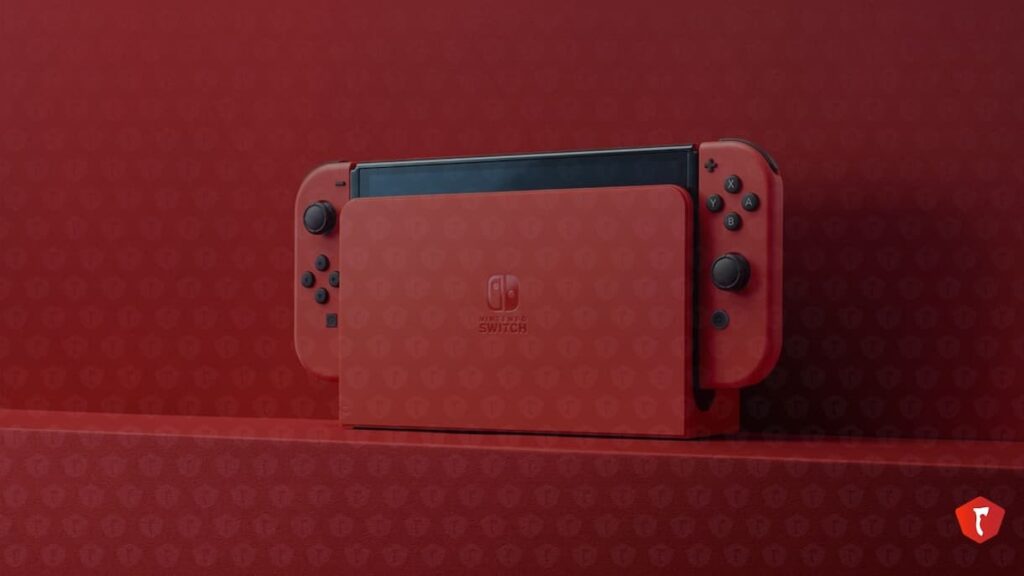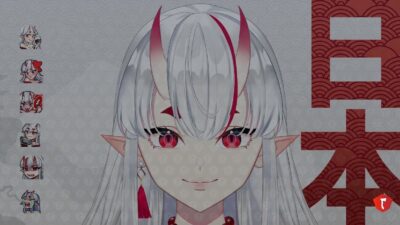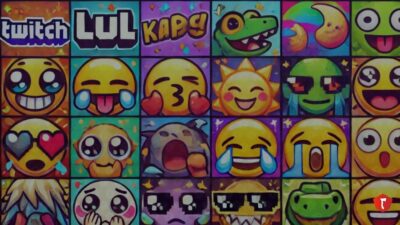After nearly two months, 22 tournaments, and the awarding of $60M in prizes, the Esports World Cup (EWC) is over. Pro teams from around the world competed in MOBAs, Fighters, Shooters, Battle Royales, and RTS titles for the right to call themselves the world’s best gamers. The spectacle of the EWC would have been impossible without the financial backing of Saudi Arabia’s Crown Prince Mohammed Bin Salman who has grown the Saudi gaming industry to $1B as of 2024.
While the EWC was a massive leap forward for worldwide esports and multi-game tournaments, the question remains whether this effort translated into live-streaming viewership – the community most closely connected to esports culture. In this article, we’re following up on our initial review of the EWC’s opening week with a full recap of the event. How did the EWC’s featured games perform on live streaming? And did co-streaming help the EWC to perform despite competition with other entertainment options like the Olympics?
The First Ever Esports World Cup is a Resounding Success, Even Competing with The Olympics
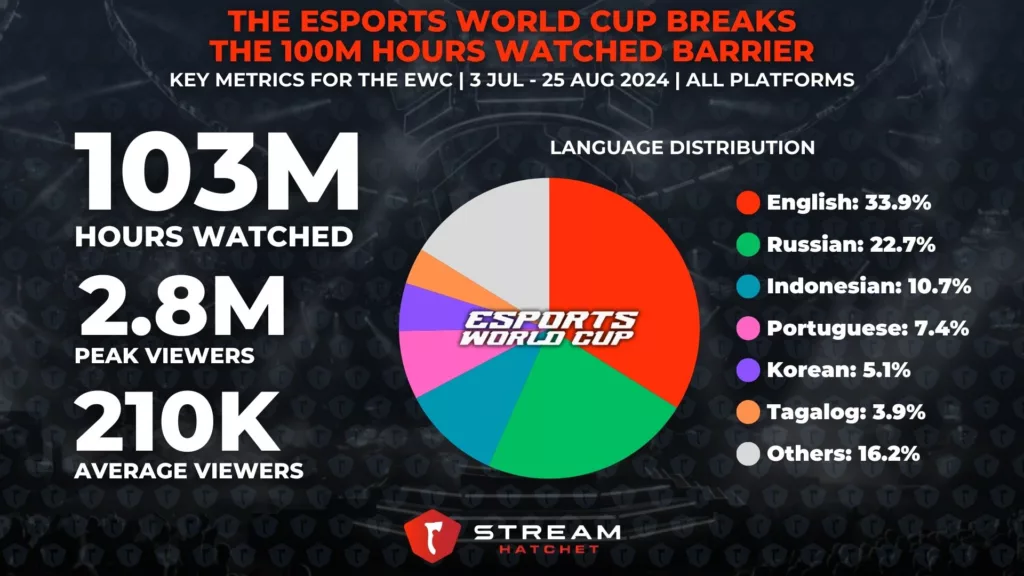
Taking the viewership of all 22 tournaments played during the EWC provides the overall esports-focused interest in the EWC (excluding other events like the opening and closing ceremonies or the Esports Awards). Focusing just on esports viewership, the EWC generated 103M hours watched with a peak viewership of 2.8M. What makes this figure even more impressive is that the EWC went toe-to-toe with the Olympics for two weeks which no doubt diverted some viewership.
Looking at the languages spoken by viewers reveals a surprise ranking. The most spoken language among EWC viewers was English at just over a third (34%) of all viewership – but second place was Russian at 23%. Russian teams were allowed to compete at the EWC under a neutral flag, perhaps inspiring Russian-speaking streaming audiences to rally behind their team in a rare global display of their skill. Additionally, although Korean-speaking audiences provided 18.9% of the EWC’s opening week viewership, this figure fell to just 5% after many MOBA tournaments wrapped up.
Big-Name Co-Streamers Bring Personality-Driven Viewership to Esports
Co-streamers have always been crucial to the success of esports, as seen in action with Rainbow Six Siege esports earlier this year. The EWC was no different, with a number of high-profile personalities lending their audience to the event. In fact, co-streaming accounted for nearly half (44%) of all EWC viewership.
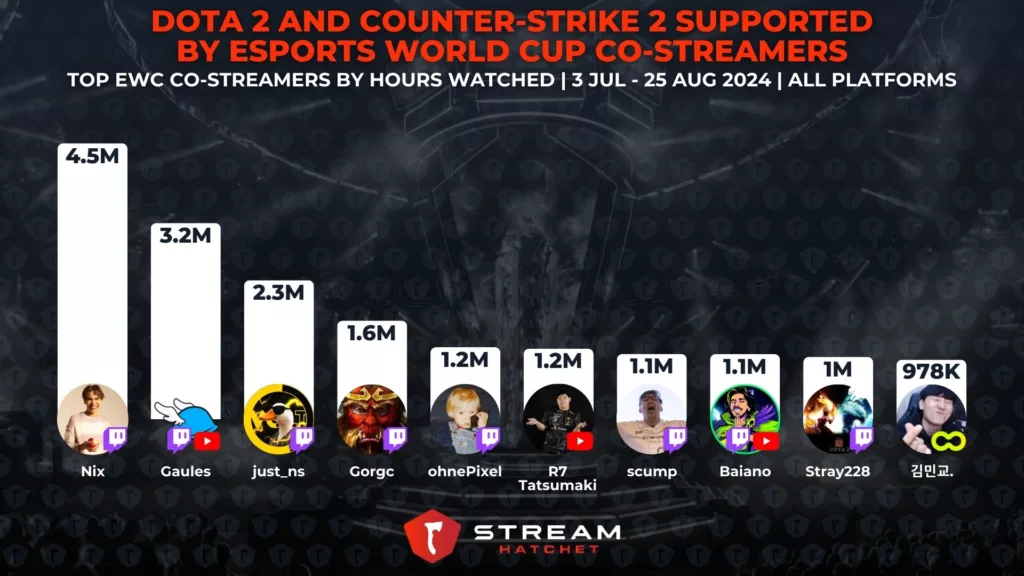
The variety of games on show led to a diverse array of streamers. Out in front was Nix with 4.5M hours watched, exclusively providing coverage of Dota 2 and Counter-Strike 2. Gaules sat in second place, but with a massive gap of 1.3M hours watched between himself and Nix – this despite having almost three times Nix’s airtime. It’s also worth noting that Nix and Gaules both covered less popular games, with many of the other top streamers splitting the viewership for League of Legends.
Representing platforms other than Twitch, the most watched streamers were R7 Tatsumaki (YouTube) and 김민교. (SOOP) with 1.2M and 978K hours watched, respectively. Although they didn’t make it into the top 10, it’s also worth mentioning that Nicoleheart23 also made a statement as the top female streamer covering esports with 542K hours watched.
The Esports World Cup is Ruled by MOBAs like League of Legends
The EWC provided a rare chance to compare game tournaments under near identical conditions, all being hosted in the same location, at roughly the same time, and with similar support from event organizers. As such, insights into the performance of each of the 21 games played at the EWC can speak volumes about the popularity of esports for that title in 2024. Note that Mobile Legends: Bang Bang (ML:BB) was featured in two tournaments, with both men’s and women’s leagues.
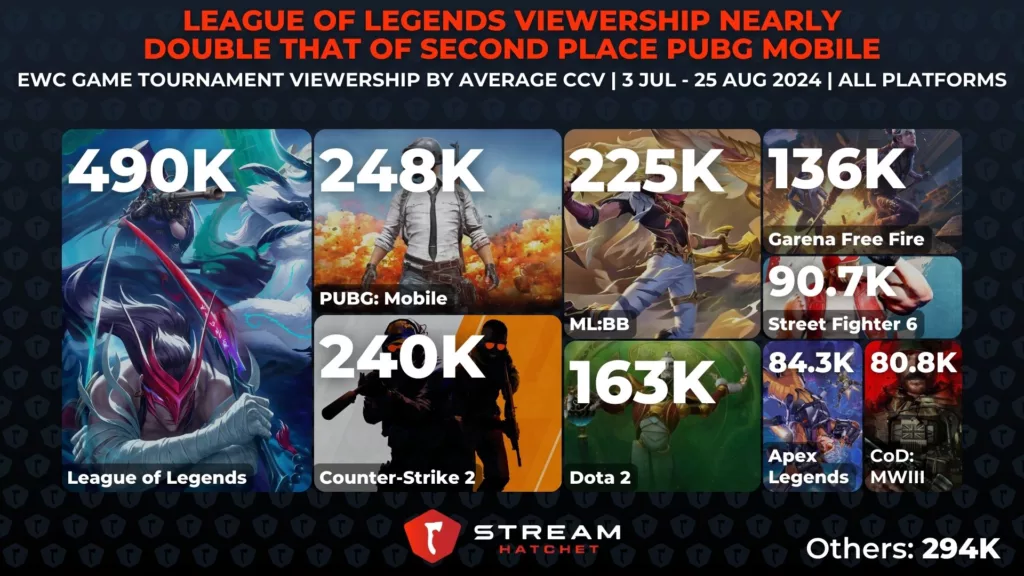
Looking at the average minute viewership (AMA) of each tournament provides the best measure of the game’s appeal regardless of their greatly varying airtimes. League of Legends saw an AMA of 490K – a monumental effort that placed it at nearly double the AMA of 248K for PUBG: Mobile. This is a massive difference given that both games produced roughly the same number of hours watched at 11.4M.
Other titles had impressive performance in other areas, however. Dota 2, for example, brought in a massive 25.5M hours watched – albeit with an airtime of 156 hours. For perspective, almost all other tournaments had airtimes between 30 – 50 hours. ML:BB also stood out with a peak viewership of 2.3M – a full 800K greater than second-place peak viewership holder PUBG: Mobile. The concurrent demand for these titles further proves how crucial mobile esports are to the worldwide esports community.
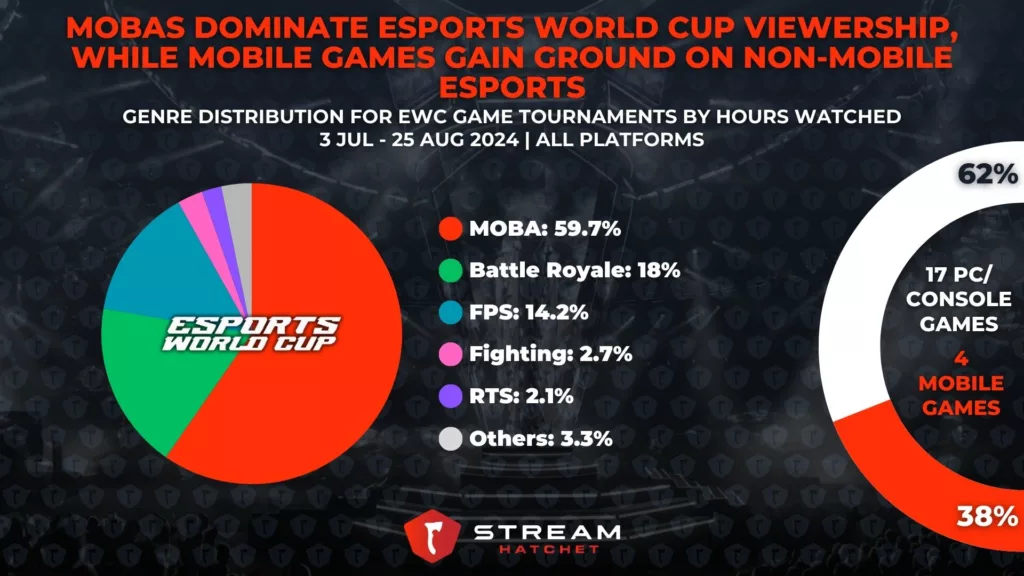
The overall hours watched across the 21 games back up these high-peak viewerships for mobile titles. Mobile games generated 39.5M hours watched at the EWC – that’s 38.3% of the entire event’s viewership. Given that only 4 out of 21 games were mobile titles (ML:BB, PUBG: Mobile, Garena Free Fire, and Honor of Kings), more popular mobile esports games could raise this figure in the future. It’s worth noting that mobile games drew only 15.6% of the viewership from co-streaming, however – personalities seem less important to mobile esports fans than gameplay.
Looking at genres, MOBAs easily came out on top with 62.3M hours watched and an AMA of 245K. This popularity stems from both mobile and non-mobile sources, with League of Legends, Dota 2, and ML:BB excelling at the EWC. A massive gulf separates MOBAs from the next two most popular genres, Battle Royales and FPS games, with 18.7M and 14.8M hours watched, respectively. Even when accounting for airtime, MOBAs still remain dominant with AMAs for Battle Royales and FPS games sitting at roughly 110K each.
These viewing figures will no doubt impact what games feature in next year’s Esports World Cup, and how much coverage each event receives as well. However, the EWC as presented this year may take on an entirely different form: The Olympic Esports Games. This collaboration between Saudi Arabia and the Olympic committee is the next step in legitimizing esports on a global scale, marking a moment of change for the industry. Stream Hatchet will be watching as esports enters a more mainstream domain in the coming year.
To keep up to date with the biggest esports and events on live-streaming platforms, follow Stream Hatchet:
